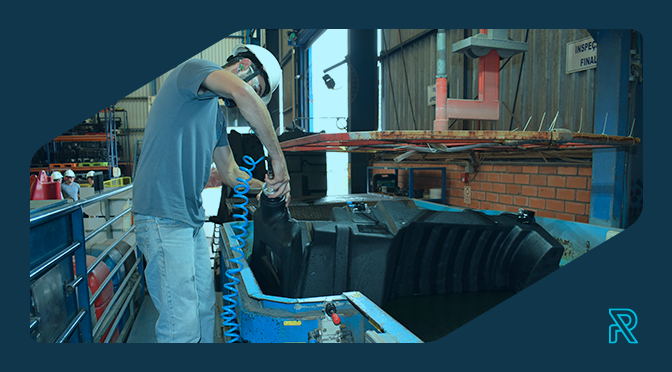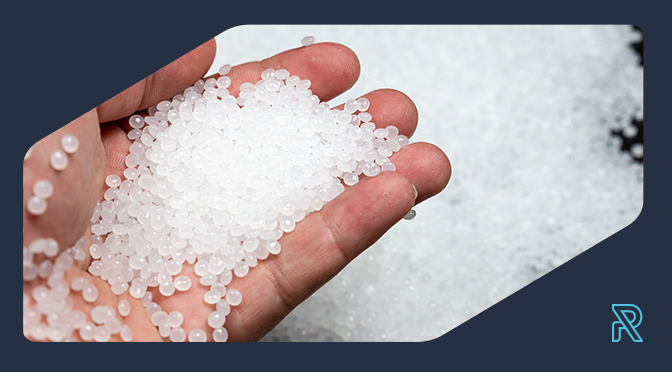Polyethylene parts: customprojects and processes
07 de August de 2024 - Polyethylene, Products, Rotomolding

Polyethylene parts are found in various industrial sectors around the world, performing diverse and essential functions for productivity. In addition to being versatile, they are durable and efficient, enabling a wide range of applications.
In today’s article, we’ll talk about these polyethylene materials. We’ll explore how rotomolded part projects are developed here at Rotoplastyc and detail the manufacturing process, highlighting its importance and the benefits it offers. Check it out!
What are rotomolded parts?
These products are manufactured through the rotomolding process, in which the plastic material, polyethylene, is heated until it becomes liquid and then shaped into a specific form through the rotation of the mold in two directions.
The method allows the creation of hollow, seamless, and uniform parts, ensuring high resistance and long service life. This process is widely used for producing technical parts due to its ability to create complex and customized shapes.
What is the importance of these materials?
Polyethylene, the base material of rotomolded parts, is known for its excellent mechanical and chemical properties. It is corrosion-resistant, highly durable, and capable of with standing different temperature variations.
Additionally, it is lightweight, flexible, and performs well in harsh environments, making it the ideal choice for various industrial applications.
In our COMPLETE GUIDE TO ROTOMOLDING: PROCESSES, BENEFITS, AND APPLICATIONS, you’ll discover all the advantages that rotomolded parts can offer.
The industrial sectors that use polyethylene parts the most
Rotomolded polyethylene parts are known for their ability to withstand harsh conditions and provide efficient solutions. Some of the main sectors that use these materials include:
Fuel and hydraulic tanks
These parts are ideal for manufacturing storage containers due to their chemical resistance and leak-proof performance, ensuring safety and reliability.
Agricultural sector
Rotomolded parts are widely used in the agricultural sector, thanks to their durability and efficiency in storing chemical products.
They can be found in planters, in seed and fertilizer boxes, for example, as well as in tractors, sprayers, corn harvesting platforms, and many other pieces of equipment commonly used in farming.
Sanitation
Rotomolded products are essential for sanitation systems, including piping and tanks for water and sewage treatment, as they do not corrode and can with stand humid and aggressive environments.
Road sector
These parts are widely used in vehicle components such as fuel tanks and toolboxes, providing lightness and impact resistance.
Civil construction
Polyethylene is used in drainage systems, insulation, and water storage, offering durable and cost-effective solutions for infrastructure projects.
We’ve prepared an article with the main reasons to invest in rotomolded parts for your business. Check it out here.
Learn about Rotoplastyc’s rotomolded parts manufacturing process
Here, the manufacturing of rotomolded parts is meticulous and customized, ensuring each product meets our clients’ specifications. See the step- by-step process for developing a custom project:
Identifying the need for product development
The first step is to understand the client’s specific demand and identify the unique requirements of the project.
Contact with the commercial department
The client contacts our commercial department to discuss the initial production details.
Project development with consultants and engineers
Our team of consultants and engineers works together with the client to develop a plan aligned with their needs.
Quote and prototype approval
After the quote is approved we create a full-size prototype or mockup of the part for the client’s approval.
Tooling development
Once the prototype is approved, we begin developing all the necessary tools for manufacturing the part.
Quality analysis
Our quality department performs an analysis of the produced sample. Once approved, the product enters the production line.
Want to learn more about our custom projects?
Visit our page to find all the details of the polyethylene parts manufacturing process. You’ll also discover how our solutions can bring numerous benefits to your business.
